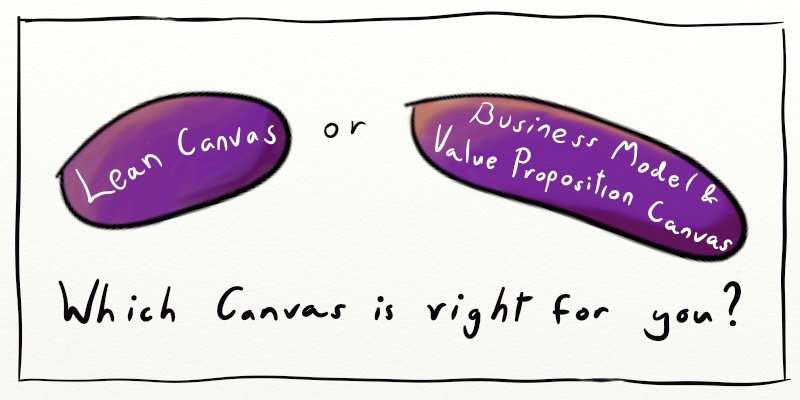New Startup? New Product? Where do you start?
Canvases are a great way to sketch out the useful elements of your business model on a page. They can help unite the team around a common goal, sell the benefits to investors or stakeholders, shape your initial hypothesis and marry up the problems and solutions.
However, with the variety available, which should you choose?
This is a brief summary of the pro’s and con’s of 2 of the main kinds of canvas to help decide which, if any is right for you.
First, the history bit...
The Business Model Canvas (BMC) was created by Alex Osterwalder in 2008 with a team of co-creators. There are many great resources available including the creative commons template canvas, youtube instructional videos and of course a series of books.
In 2010 Strategyzer, a consultancy in which Alex Oserwalder is a partner, released a plug-in for the BMC. This is called the Value Proposition Canvas (VPC).
The Lean Canvas (LC) was created by Ash Maurya as a partner to the Lean Startup methodology which was created by Eric Ries, also in 2008. The Lean Canvas is an iteration of the BMC which Ash created when he felt that he could do better in the context of startups. To show its heritage and encourage its adoption, he decided to keep the existing format.
For the Lean Canvas, there are similar number of resources to help you understand its use: books, web, youtube etc.
Overview - The Business Model Canvas
For the purpose of this review we will consider the BMC when paired with the VPC. This pairing, splits the process in to 3 sections. Firstly the VPC, prompts you to consider the problems that people are having and the solutions to those problems. These could be pains with existing jobs or gains you could deliver such as savings, efficiencies etc. If you think that you have a match, that’s great – move on to the next section. This is why this plug-in is so valuable. It really allows you to put the customers’ problem front and centre in your thinking, where it should be.
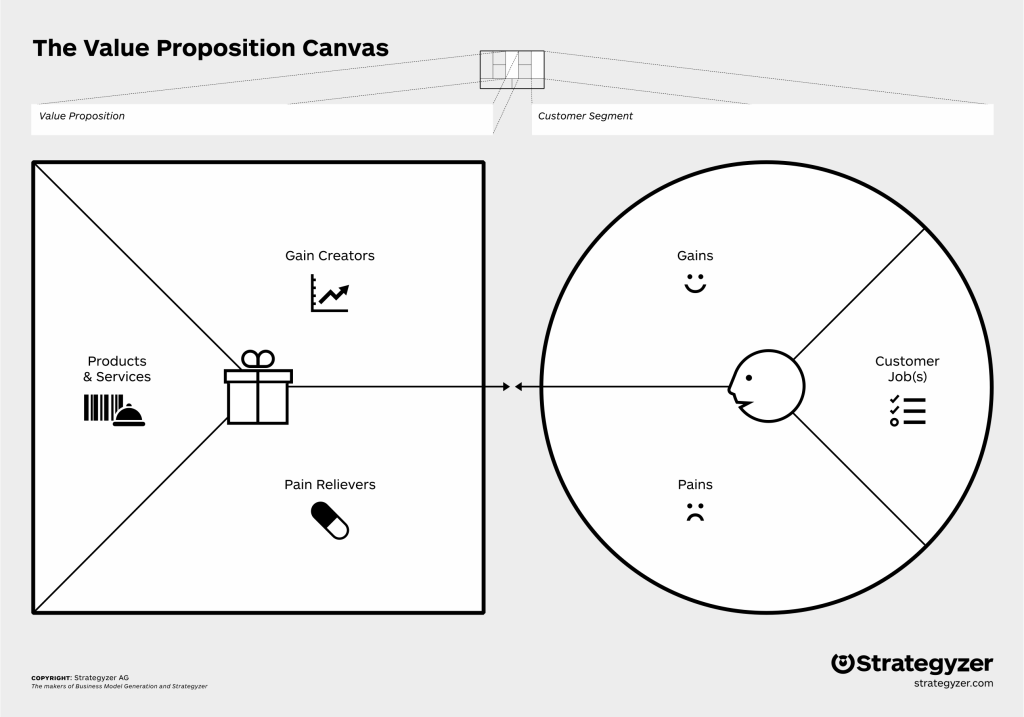
The second section, takes these inputs to the BMC and prompts the user to complete the right hand side of the canvas. Here you think about why your customer will acquire and retain your product; think of Dave McClure’s Pirate metrics AARRR: Acquisition, Activation, Retention, Referral, Revenue. You are also prompted to consider the Channels to take your product to your customers and the revenue streams. Of course for existing businesses, these could be savings opportunities as well as revenue generation.
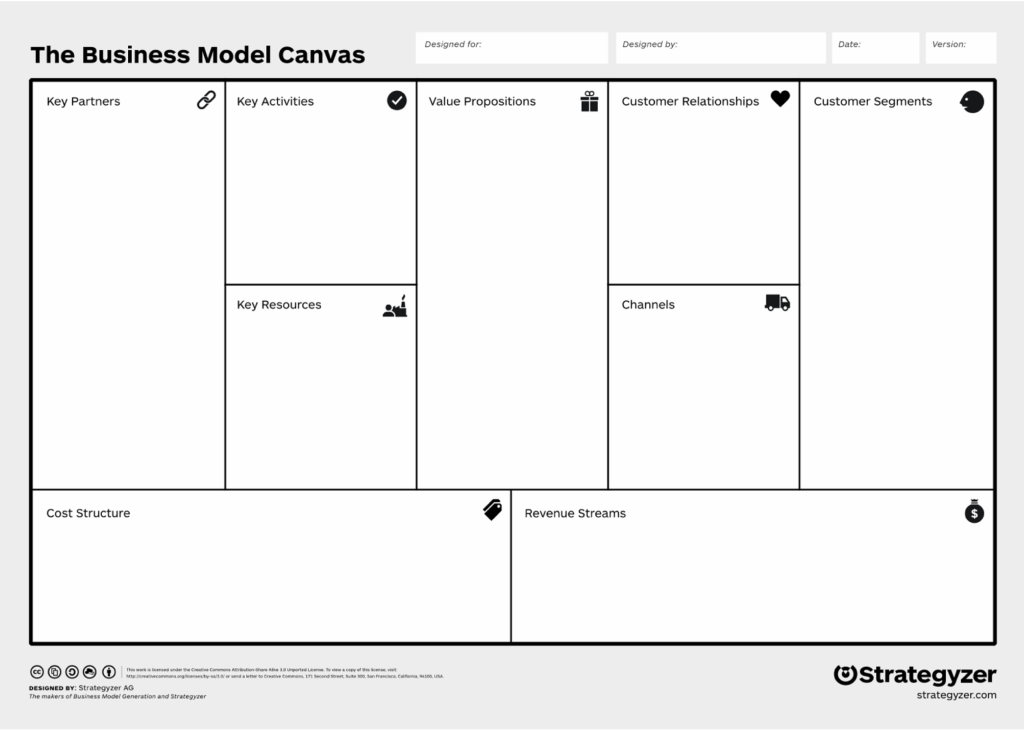
With the right side complete, you now turn your attention to consider “How” you are going to realise your goals e.g. the resource, partners and activities required to turn your hypothesis in to a reality.
These sections roll up in the Costs section, on the bottom left of the canvas.
Overview - The Lean Canvas
The Lean Canvas, is also best filled out in sections. The first 2 of which are on opposite sides of the canvas: Customer Segments & Problem. One of the areas where the LC is clever, is that it has sub-sections. For example, the Customer Segment section prompts users to think of Early Adopters. This is on top of the notes where they are prompted to consider Users and Customers i.e. those who use and those who pay.
I like this twist and believe that this helps people to really get Lean when they are considering their business plan. For example who are the skinniest group of users that we need to satisfy? What the 3 most important problems that we have to solve? Not all their problems, just the most important 3.
You are also prompted to investigate existing alternatives. How many businesses would have been saved if this was always considered up front?
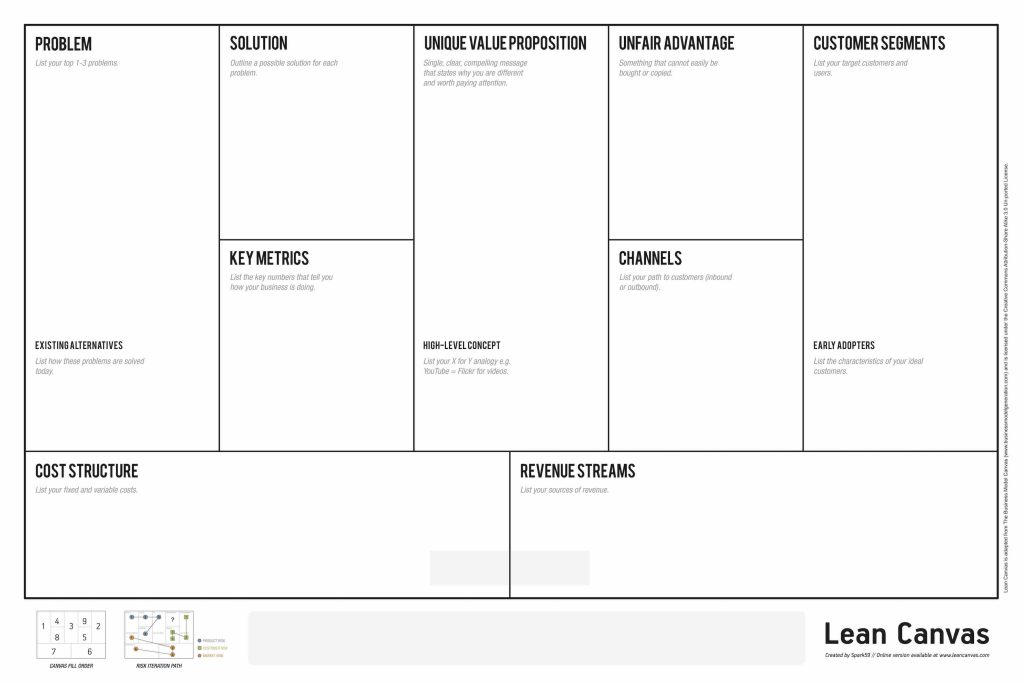
The next sections, are shown as 3, 4, 5 in the small pic above.These cover how the Solution addresses the problems, what the Unique Value Proposition is and the Channels to take the product to the customers. You will probably notice at this stage the Solution section is a lot smaller that the Problem section. This is by design. Ash wants you to learn to “Love the problem” not the solution. It is easy to get hung up on the tech or the shiny new thing but unless it addresses a real problem then we might as well go home.
From here we consider revenue streams. For startups this will cover who is paying, how much and how many customers will define success at the stages of our development. For incremental initiatives, this could be savings too.
After this, we have the Key Metrics. This is where we define what we believe the KPI’s to define success will be e.g. are we looking to increase NPS, are we looking to double sign-ups etc. Similar to the Customer Relationships section in the BMC, you should consider the Pirate metrics again.
After this we complete the Costs section. In this space, we would consider all of the sections covered in the left hand side of the BMC. This relies on you already having the mindset to consider all of those areas: Partners, Activities, Resources. This is not necessarily an issue but it is a small space with few cues for what could be pretty complex so something to watch out for.
The final section is where we consider Unfair Advantage. What makes your solution to your customers problem so special? If you don’t have one naturally, then we need to think about engineering one to stay or to get one step ahead.
So which is better?
Both clearly have their strengths and weaknesses. If we consider them side by side, there is of course a lot of duplication and some areas where one focuses more than the other.
This image shows a box for box comparison of the 2 canvases.
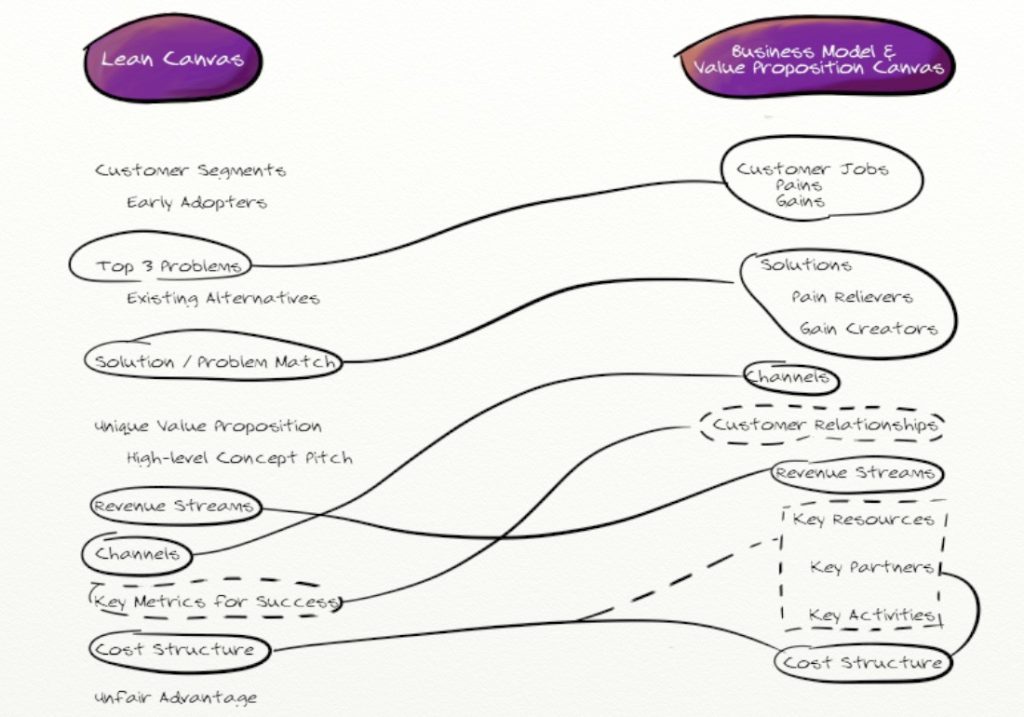
If we look at the areas where the LC asks more questions and forces more thinking, this is around the people involved, the users & the customers. The BMC tries to plug this gap with the VPC plugin, which works to a certain extent but does then take this to an additional canvas which loses the plan-on-a-page element. For me this also lacks the Minimum Viable nature of the LC and would need experience to remain focused on the core value rather than diving down in to too many problems and solutions.
The additional area where the LC steps up is of course in the Startup space. It contains more on the vision / pitch area and also the Unfair Advantage section. This is great for startups but might not be as useful for incremental change, whether organisational or product based.
The stand-out area for the BMC is the left hand side of the canvas where we capture: Resources, Partners & Activities. Depending on our field of operation, these could be critical.
Neither canvas is perfect nor would they claim to be but both are a lot better than the older business case alternatives. Personally, I believe that left to right works pretty well, so creating a non-standard canvas flow is creating a small but unnecessary barrier to adoption.
The Lean Canvas focuses more on the “Why” are we building this and forces a Lean Startup MVP mindset. The Business Model Canvas dives deeper in to the “How” are we going to do this and puts more rigour around the implementation.
Working in an modern agile way is all about creating a hypothesis, and testing it with as little exposure as possible and iterating with very fast feedback loops. Either of these will help. Whichever feels right for you is probably right, just remember that these are a way to capture your initial thinking and something that you should come back to and evolve. These are not something to tie yourself to. And of course you can always create your own canvas if these don’t quite fit, just be aware of what you are dropping and why if you choose to do so.
Good luck!
Resources
For further information, check out these resources:
Lean Canvas Overview – Ash Maurya
Business Model Canvas Overview – Alex Osterwalder
Business Model Generation on Amazon
Lean Startup on Amazon – Eric Ries
